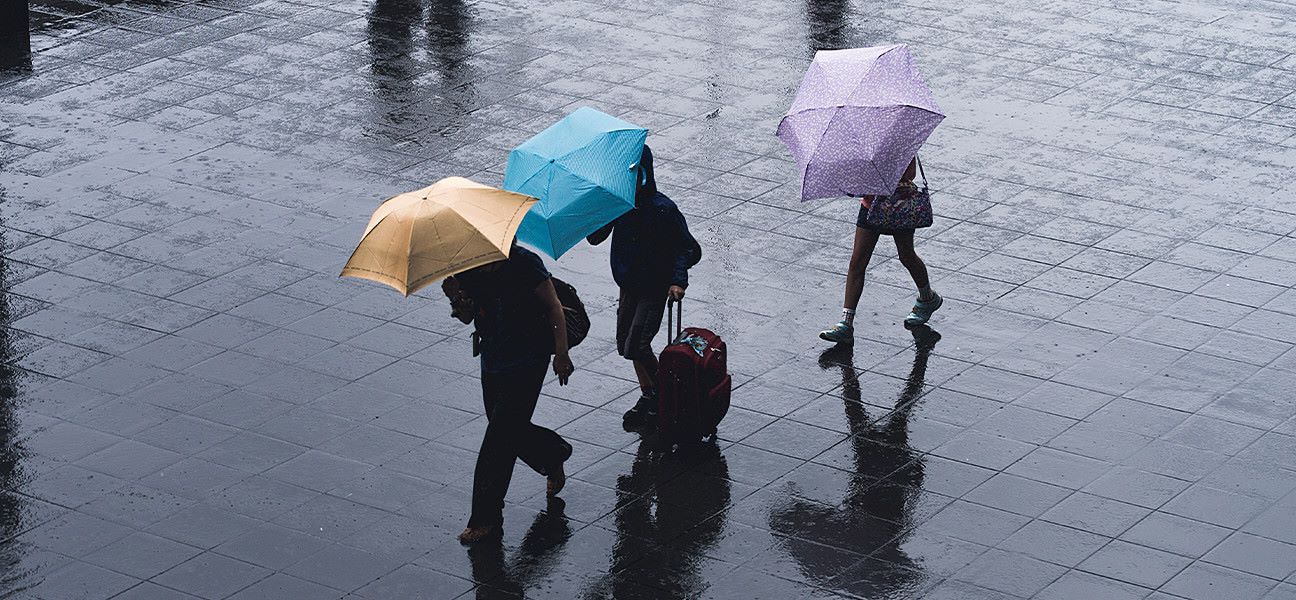
What is sensible weather? Sensible weather refers to the day-to-day atmospheric conditions we experience, like temperature, wind, precipitation, and humidity. Unlike climate, which looks at long-term patterns, sensible weather focuses on the immediate and short-term changes. Why does it matter? Because it affects our daily lives, from what we wear to how we travel. Understanding sensible weather helps us prepare for sudden changes, like storms or heatwaves. Want to know more? Here are 23 intriguing facts about sensible weather that will help you understand how it shapes our world and impacts our daily routines.
What is Sensible Weather?
Sensible weather refers to the day-to-day conditions we experience, like temperature, humidity, wind, and precipitation. These elements directly impact our daily lives and activities. Here are some fascinating facts about sensible weather:
-
Temperature is a measure of how hot or cold the atmosphere is. It can vary greatly between day and night and from season to season.
-
Humidity represents the amount of water vapor in the air. High humidity can make temperatures feel warmer than they actually are.
-
Wind is air in motion relative to the surface of the Earth. It can influence weather patterns and is measured in speed and direction.
-
Precipitation includes all forms of water, liquid or solid, that falls from clouds and reaches the ground. This includes rain, snow, sleet, and hail.
How Temperature Affects Us
Temperature plays a crucial role in our comfort and health. It influences what we wear, how we feel, and even our productivity levels.
-
Heatwaves are prolonged periods of excessively hot weather. They can cause heat exhaustion and heatstroke, especially in vulnerable populations.
-
Cold snaps are sudden drops in temperature. They can lead to frostbite and hypothermia if proper precautions aren't taken.
-
Temperature inversions occur when a layer of warm air traps cooler air near the ground. This can lead to poor air quality and fog.
-
Urban heat islands are areas in cities that are significantly warmer than their rural surroundings due to human activities and infrastructure.
The Role of Humidity
Humidity affects how we perceive temperature and can influence our health and comfort.
-
Dew point is the temperature at which air becomes saturated with moisture and dew forms. A high dew point indicates high humidity.
-
Relative humidity is the percentage of moisture in the air compared to what the air can hold at that temperature. High relative humidity can make it feel hotter than it is.
-
Humidity and health: High humidity can exacerbate respiratory issues and make it harder for the body to cool itself through sweating.
-
Humidity and mold: High humidity levels can promote mold growth indoors, which can affect air quality and health.
Wind and Its Impact
Wind can shape weather patterns and influence our environment in various ways.
-
Wind chill is the perceived decrease in air temperature felt by the body due to the flow of air. It can make cold temperatures feel even colder.
-
Gusts are sudden, brief increases in wind speed. They can cause damage to structures and make outdoor activities challenging.
-
Trade winds are steady winds that blow from east to west near the equator. They have been used by sailors for centuries to navigate the oceans.
-
Jet streams are fast-flowing air currents high in the atmosphere. They influence weather patterns and can affect flight times.
Precipitation and Its Forms
Precipitation is a key component of the water cycle and comes in various forms, each with its own characteristics.
-
Rain is liquid precipitation that falls when atmospheric conditions are warm enough. It is essential for replenishing water supplies.
-
Snow forms when temperatures are low enough for water vapor to crystallize. Snowflakes have unique shapes and can vary in size.
-
Sleet is a mix of rain and snow or ice pellets. It occurs when a layer of warm air is sandwiched between colder layers.
-
Hail forms in strong thunderstorms with intense updrafts. Hailstones can cause significant damage to crops, vehicles, and buildings.
Extreme Weather Events
Extreme weather events can have profound impacts on communities and the environment.
-
Tornadoes are violent rotating columns of air that extend from thunderstorms to the ground. They can cause widespread destruction.
-
Hurricanes are powerful tropical storms with strong winds and heavy rain. They can lead to flooding, storm surges, and wind damage.
-
Blizzards are severe snowstorms with strong winds and low visibility. They can disrupt transportation and pose risks to health and safety.
Weather Wonders: Final Thoughts
Weather impacts our lives daily. From sunny skies to stormy nights, understanding these natural phenomena helps us prepare and appreciate the world around us. Knowing facts like how lightning can strike the same place twice or that hurricanes have male and female names adds depth to our weather knowledge. It’s fascinating that rainbows are full circles and that snowflakes are unique. These tidbits make weather more interesting and less mysterious. Whether you’re a weather enthusiast or just curious, these facts can spark conversations and maybe even inspire you to learn more. Stay curious, keep exploring, and remember, weather is more than just a forecast—it’s a window into the planet’s dynamic systems.
Was this page helpful?
Our commitment to delivering trustworthy and engaging content is at the heart of what we do. Each fact on our site is contributed by real users like you, bringing a wealth of diverse insights and information. To ensure the highest standards of accuracy and reliability, our dedicated editors meticulously review each submission. This process guarantees that the facts we share are not only fascinating but also credible. Trust in our commitment to quality and authenticity as you explore and learn with us.


